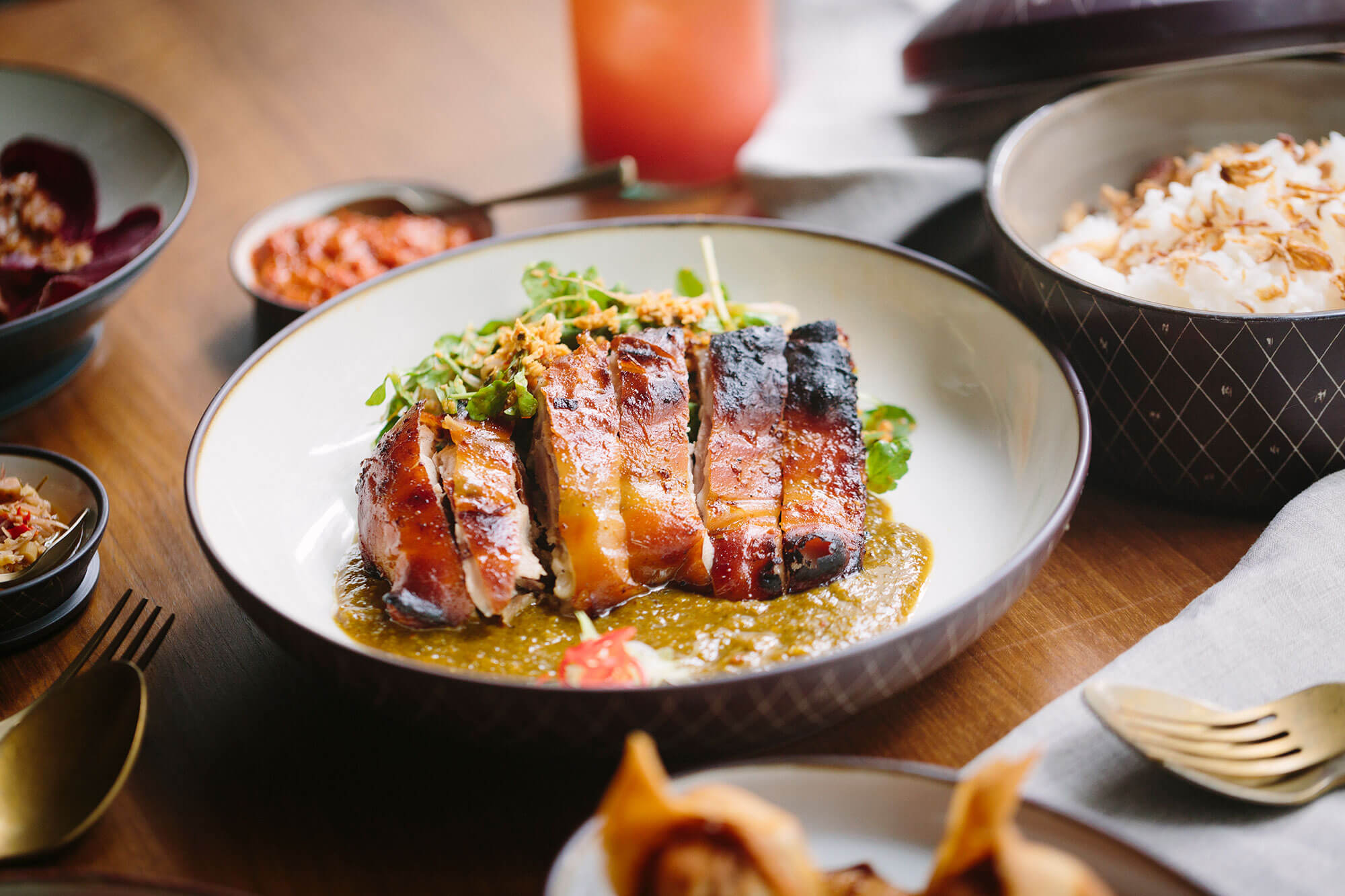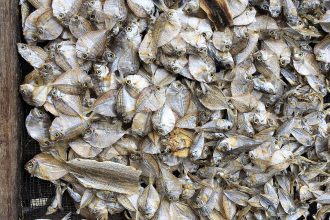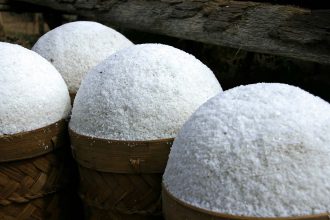
Bali has been part of the Asian trading network since the 15th century. Traders from Java brought rice and salt which could later be exchanged for cash crops, including pepper from Sumatra, spices from the Moluccas, and cotton from Bali.
It is believed that these early trading activities have influenced the taste of Balinese cuisine, predominantly through the base spices (base genep) used. Some ingredients used in base genep are Indonesian bay leaves, lemongrass, galangal, ginger, red chillies, shallots, garlic, candlenuts, kaffir lime, turmeric, long Javanese pepper, sand ginger, cumin, pepper, coriander, cloves, and nutmeg. While tubers such as sand ginger, turmeric, and galangal grow in Bali, spices such as cumin, pepper, coriander, cloves, and nutmeg are not indigenous to Bali and it is thought that these ingredients became known to the Balinese through the early spice trading.
Old Balinese manuscripts recognised base genep as “usabe”. The tradition of writing (on toddy palm leaves) has been around since the Balinese established the subak agricultural system 2000 years ago. Previously, usabe may have existed, but not recorded. During that period, Bali had already established a trading relationship with other nations, including India.
One of the most famous cultural dishes known in Bali is babi guling (spit roast pig). The pig is stuffed with base genep and slow-roasted on an open fire until the skin is crispy and the meat succulent. Babi guling is usually carved into thin slices with the aromatic base genep giving a comprehensive earthy note balanced with the salty and savoury flavours of the pork.
Bali guling was originally made as a ceremonial offering to the Balinese Hindu gods, with the pig served whole to represent perfection and abundant grace to the gods.
Myself and Chef Antoine were really lucky during our genial visit to Bengkala village, Kubutambahan in North Bali. We were delighted to dine on a babi guling feast and witness the making of it with our beloved Balinese pork breeder who joined us for this gastronomic get-together. We followed every step of the process, with the cooks honouring the sacred life of the animal by using the best cooking method for an authentic taste. It was truly a luxury!
To complete the holistic dining experience, we learned that after the babi guling was well done, parts of roasted pig, such as the ear, nose, tail, skin, foot, and tongue, were thinly sliced and used as part of a canang sari (offering plate). Then, the imperfect babi guling was ready for human consumption. This part of process is often neglected by most commercial babi guling vendors and that is part of reason why we choose babi guling to be part of the Kaum menu; we wanted to revive the soulful meaning of an authentic Indonesian dish.
CONTINUE THE JOURNEY

For many Indonesians, salted fish is one of life’s simple pleasures. We are perfectly content enjoying steamed rice, salted fish and a fiery sambal (chilli relish), devouring all with our right hand. Happiness is purely simple for most Indonesians!

Singaraja totally captivates us…”
Lisa Virgiano is brimming with enthusiasm for the local produce she and the Kaum culinary collective have discovered in Bali’s oldest port.

Rice is an essential commodity in Indonesia. Nowadays, most Indonesians think of rice not only as an indispensible component to any meal, but also as a kind of “sacred” staple. But has this forever been the case? Have Indonesians always consumed rice as part of their daily diet?

Chilli relish (sambal) is an imperative Indonesian condiment, served with almost every Indonesian dish. It arouses the appetite, ignites the senses, and complements the taste.




